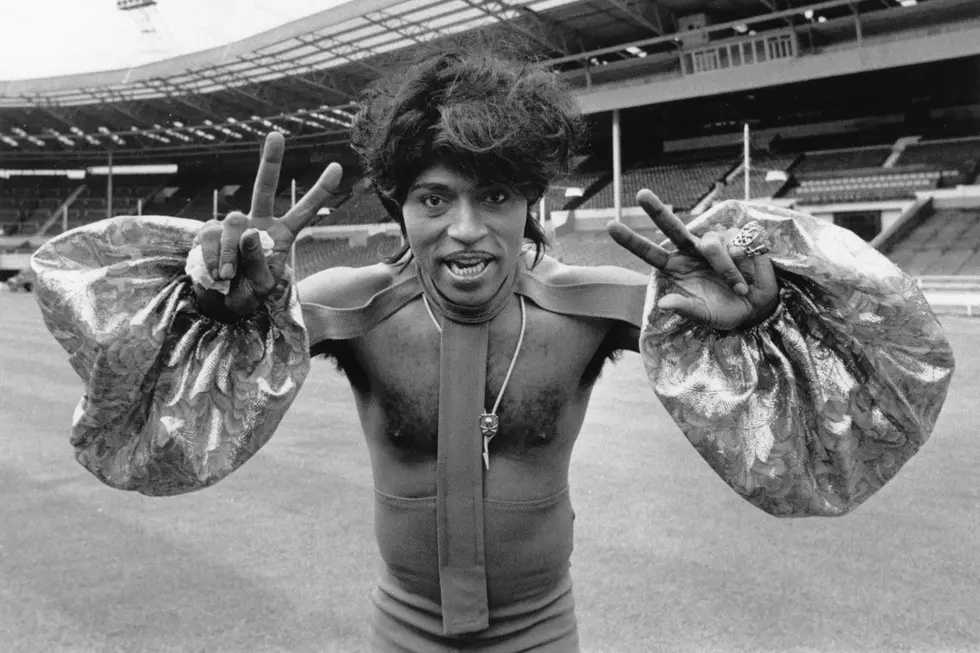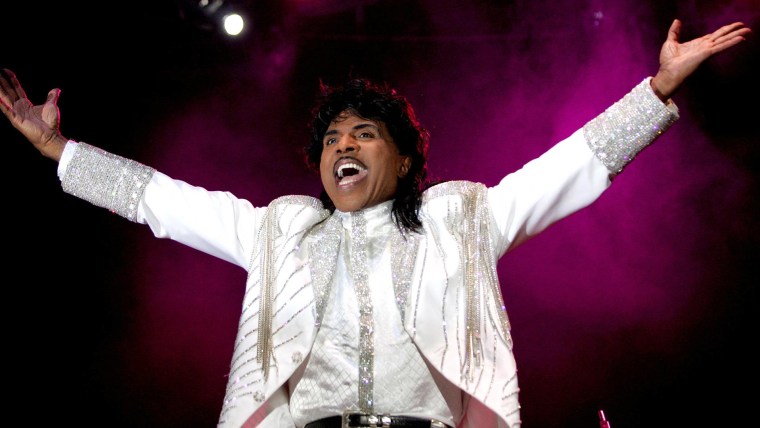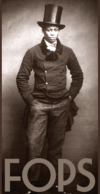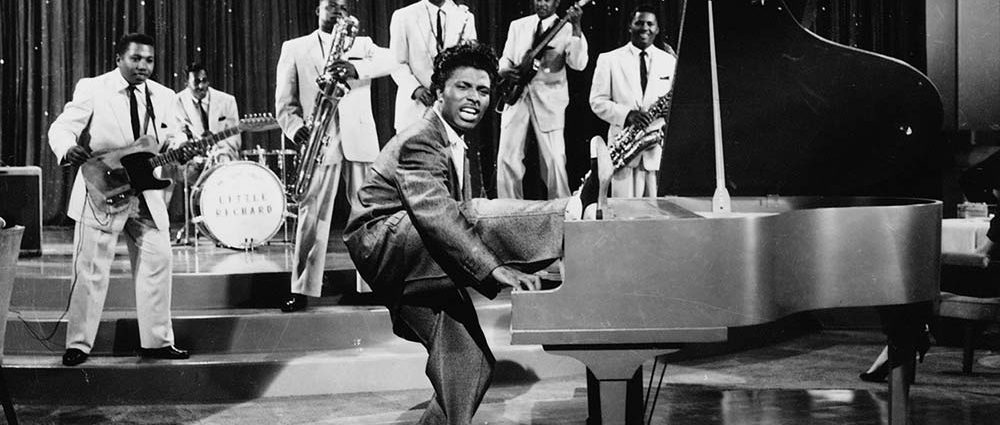
Little Richard (1932–2020), one of the founding fathers of rock & roll
Little Richard, the flamboyant father of rock ‘n’ roll whose “Tutti Frutti” changed the world, died Saturday at the age of 87.
Over the course of a career that veered from down-and-dirty rock ‘n’ roll to raising the roof for Jesus and back again more than once, singer, songwriter, and pianist Richard captivated audiences and listeners with his wild performances and energetic recordings. His songs are the essence of early rock ‘n’ roll, with tracks like “Good Golly Miss Molly” and “Lucille” laying the groundwork for decades of music to come.
Rock ‘n’ roll’s entire attitude is Little Richard’s
It was much more than Richard’s songs that profoundly influenced the development of a culture. It was his entire being. His friendly boastfulness – often delivered in rhyming meter – gave rock ‘n’ roll its attitude. His screaming delivery gave it a voice. His strut – whether on the ground or atop his piano – is reflected in countless others who came after him. So is his androgynous sexuality, rare in the 1950s but seen since in stars from David Bowie to Prince to Adam Levine.
Put those components together and you get a man that the world wasn’t quite ready for when “Tutti Frutti” dropped in October 1955. In that month, Andy Williams’ syrupy-sweet “Love Is a Many-Splendored Thing” topped the chart; earlier in the year, the airwaves had been dominated by the three-part harmony of the McGuire Sisters on “Sincerely” and Mitch Miller’s strait-laced rendition of “The Yellow Rose of Texas.” Bill Haley and His Comets had brought rock ‘n’ roll to 1955 radio with the summertime hit “Rock Around the Clock,” but it was a tame precursor to what was to come.
“Tutti Frutti,” when Richard first wrote it, was far from ready for prime time. Its lyrics weren’t just sexually suggestive – they were descriptive, and of gay sex at that. Richard had been performing it to adoring crowds in nightclubs, but when it came time for him to record the tune in 1955, it had to be toned down for a wider audience. Enter co-lyricist Dorothy LaBostrie, who sanitized “Tutti Frutti” after Richard reportedly read her the lyrics with his back sheepishly turned. The revised result was more nonsensical than suggestive, but with Richard’s driving piano, forceful vocals, and joyful shout of “A-wop-bom-a-loo-mop-a-lop-bom-bom” leading the track, it soared to No. 2 on the rhythm and blues chart.
The hit songs
“Tutti Frutti” only rose to No. 17 on the rock chart, held back by a mainstream audience that seemed to love the song while also being a little bit afraid of it. While Richard’s original languished, Pat Boone recorded a toned-down version for mainstream radio in 1956 that outperformed the original.
Richard didn’t mind the extra exposure for his music – as well as the royalties – but he also resented the fact that mainstream radio snubbed him in favor of a white performer’s watered-down interpretation of his music. He later told The Washington Post, “The white kids would have Pat Boone upon the dresser and me in the drawer ’cause they liked my version better, but the families didn’t want me because of the image that I was projecting.”
But at the time, Richard’s response was not to complain, but to write a song so fast and wild that, he thought, Boone couldn’t handle covering it. That song was “Long Tall Sally,” and Richard’s recording topped the R&B chart and even cracked the top 10 of the pop chart. Boone did, in fact, record his version of “Long Tall Sally,” though it didn’t rise quite as high on the chart as Richard’s original did.
Richard kept Boone away with the sexually suggestive “Good Golly Miss Molly,” and one of 18 hit singles he would rack up before the decade ended. Others included “Rip It Up,” “Keep A-Knocking,” and “Lucille.”
“I was the founder of gay”
Richard’s 1950s success was driven as much by his unforgettable performances as by his music – wearing sequined suits and makeup, his hair in a towering pompadour, he stood to play, jumped up to dance on the piano, and pounded the keyboard with wild abandon.
Of his choice to wear makeup, Richard told Jet magazine, “I wore the makeup so that white men wouldn’t think I was after the white girls. It made things easier for me, plus it was colorful, too.” He offered another explanation for his style in his authorized biography: “We decided that my image should be crazy and way-out so that the adults would think I was harmless. I’d appear in one show dressed as the Queen of England and in the next as the pope.”
Richard discovered the appeal of his gender-bending style early, long before his recording career began. Born Richard Wayne Penniman in Macon, Georgia, Dec. 5, 1932, Richard developed his vocal style while enthusiastically singing and yelling through church services as a boy. In a 1987 interview with filmmaker John Waters for Playboy, Richard described another formative childhood experience for the sound he would create as an adult:
“I look back on my life, comin’ out of Macon, Georgia – I never thought I’d be a superstar, a living legend. I never heard of no rock and roll in my life. Black people lived right by the railroad tracks and the train would shake their houses at night. I would hear it as a boy and I thought: I’m gonna make a song that sounds like that.”
His flamboyance followed when, in his teens, he ran off with a traveling medicine show. He became, as he called it, a “drag baby,” dressing as a woman complete with sky-high heels – in which he couldn’t walk, so they stood him in front of the microphone and let him belt out his songs standing stock-still – and calling himself “Princess Lavonne.” He moved on to other traveling shows, performing in other drag acts and discovering that the crowds loved his gender ambiguity.

But it wasn’t just an act. Richard’s sexuality was as fluid as his style, and he had known since childhood that he was gay. He told Waters, “I believe I was the founder of gay. I’m the one who started to be so bold tellin’ the world! You got to remember my dad put me out of the house because of that.” The story there, as Richard told it in an interview with British GQ, was that “He said he wanted seven boys, and that I had spoiled it, because I was gay.” Richard’s father kicked him out when he was still a teen.
Yet in an era when few admitted to homosexuality for fear of the strong social stigma against it, Richard shrugged his shoulders and carried on, forming relationships with both men and women and openly admitting to his preferences. “I was wearing make-up and eyelashes when no men were wearing that,” he told Waters. “I was very beautiful; I had hair hanging everywhere. If you let anybody know you was gay, you was in trouble; so when I came out I didn’t care what nobody thought.”
An epic career
An openness that might have ruined most men in Richard McCarthy’s mid-century America ended up working for Richard, and his audience expanded. The growing success of Richard’s act in traveling shows led to opportunities to record. But early on, years before the dawn of rock ‘n’ roll, his characteristic vocal style was confusing to his would-be producers. “In the studio, we got low-down and they said: ‘We ain’t never heard anything like this,’” he told Waters. “I would sing and scream and make those high notes and low notes. Oh, I was a wild child! I sent a tape to Specialty Records and they didn’t get back in touch with me.”
Yet he began to gain regional notoriety, playing blues and boogie woogie and charting the single “Every Hour” in Georgia. He toured with the Tempo Toppers and the Upsetters, and eventually Specialty Records reconsidered – he got a chance to record for the label with legendary recording engineer Cosimo Matassa. Among the fruit of that session was “Tutti Frutti,” recorded in three takes and soon to become a hit.
Richard rode the first wave of his success for a few short years. “Tutti Frutti” put him on the musical map; follow-up hit “Long Tall Sally” broke the top ten both in the U.S. and Great Britain. Other singles charted at home and abroad, and Richard began to get movie offers, a few of which he took, playing small roles in “The Girl Can’t Help It” and others. And he toured across the U.S., bringing together black and white audiences in a still deeply segregated country.
Richard’s concerts were among the first in the U.S. to attract racially diverse audiences. The teens who loved his music simply wanted to see him leap atop his piano and dance wildly as he screamed out his hits – the skin tones of their fellow concertgoers weren’t their concern. So audiences came together in venues that may have started the night segregated – white kids on the floor and black kids in the balcony – but by the end of the night, they were all dancing together, caught up in the music. It was a small but significant step toward broader integration in the U.S.
Richard toured around the world in the 1950s, as well, and it was while he was on tour in Australia that he experienced something that would change the course of his career. That something was Sputnik, the Soviet satellite that launched in late 1957, and it skimmed low over the stadium where Richard was performing. The singer was terrified by the mysterious fireball, considering it a religious experience and a sign to get out of the rock ‘n’ roll business.
Richard couldn’t leave music behind, but he turned to gospel as his genre of choice. He began preaching with the Little Richard Evangelistic Team and had moderate chart success with his gospel songs. But by 1962, he was ready to reenter the secular music scene, persuaded by concert promoter Don Arden, who told Richard that his earlier rock records were still popular in Europe and he should tour there.

When Richard discovered when he went to England in the early 1960s was a new generation of young musicians who were strongly influenced by his groundbreaking recordings. They included the members of the Beatles, then an up and coming act who were thrilled to open for their idol, whose songs they had been playing for years. (Legend holds that Paul McCartney impressed John Lennon on the first day they met by playing him Little Richard songs and imitating Richard’s screaming vocals.)
Buoyed by the success of his European tour, Richard returned to the U.S. and threw himself into recording, releasing modestly popular singles including “I Don’t Know What You’ve Got (But It’s Got Me)” and “Do You Feel It?” Among the members of Richard’s 1960s backing band were a young guitarist named Jimi Hendrix – who Richard let go when his wild onstage antics began to upstage Richard’s own – and an even younger Billy Preston, who was just 16 when he began playing with Richard and would later record with the Beatles and enjoy his own solo career.
Richard stepped away from rock music again in the mid-1970s, devastated after the death of his brother, Tony. He released a single gospel album during this time away from rock, but when rock ‘n’ roll began to call again in the next decade, Richard answered. His comeback started with a tell-all biography, “Quasar of Rock: The Life and Times of Little Richard,” written by Charles White with Richard’s enthusiastic consent and frequent contributions.
The book led to a movie offer to play a role in “Down and Out in Beverly Hills,” Richard accepted also performing the song “Great Gosh a’Mighty” for the soundtrack, which became a modest hit. Richard would stick with rock ‘n’ roll this time, continuing to record and tour sporadically for the rest of his life.
Little Richard’s legacy
One of the 10 inaugural inductees to the Rock and Roll Hall of Fame, Richard also was given honors including a Grammy Award for lifetime achievement, a star on the Hollywood Walk of Fame, and inclusion on list after list of the all-time greatest rock ‘n’ rollers. In 2010, Time magazine ranked debut album “Here’s Little Richard” second on its list of “100 Greatest and Most Influential Albums of All Time.” “Tutti Frutti” is widely cited as one of rock’s most influential recordings, and it has been preserved in the Library of Congress’ National Recording Registry.
The list of artists who owe their careers in part to Richard’s influence neither begins nor ends with the performers who were influenced by his gender ambiguity. It’s a wide-ranging list that includes rock musicians from James Brown to Patti Smith to Bruno Mars. The Beatles idolized him – George Harrison, during the band’s Rock and Roll Hall of Fame induction, called their career “all his fault, really.” Mick Jagger watched him perform and developed his own strutting stage presence from what he saw. Bob Dylan’s 1959 high school yearbook noted his ambition as “to join Little Richard.”

Elton John told British GQ, “When I saw Little Richard standing on top of the piano, all lights, sequins and energy, I decided there and then that I was going to be a rock ‘n’ roll piano player.”
Motorhead frontman Lemmy Kilmister often spoke about Richard’s influence on his development into one of the kings of hard rock: as he told the Chicago Tribune in 2011, “Little Richard sang how I felt. I was 12 years old when I first heard him and that music, and I felt it was mine.”
The Rock and Roll Hall of Fame gave Richard credit for ushering in rock music: “More than any other performer – save, perhaps, Elvis Presley, Little Richard blew the lid off the Fifties, laying the foundation for rock and roll with his explosive music and charismatic persona.”
Penniman was briefly married to Ernestine Campbell in the 1950s and ‘60s, during which time he adopted a son, Danny Jones. Jones survives him.

